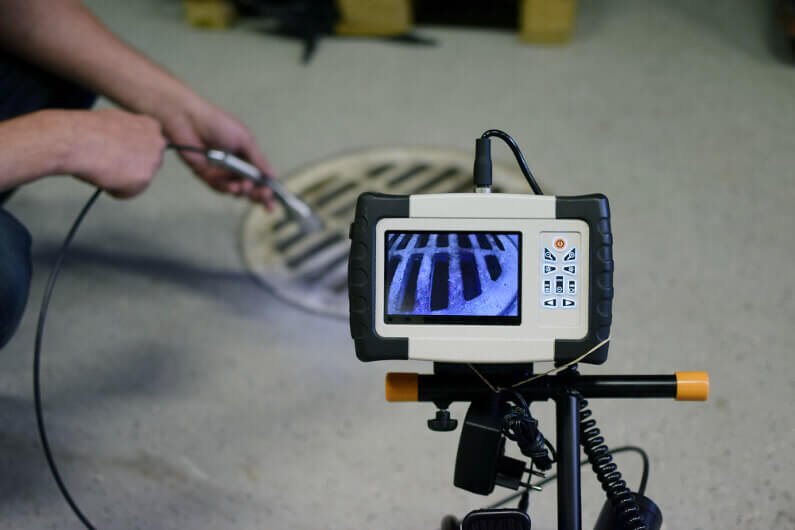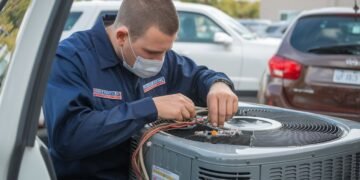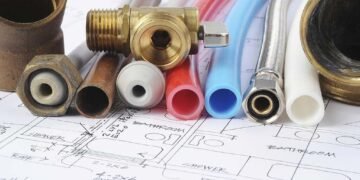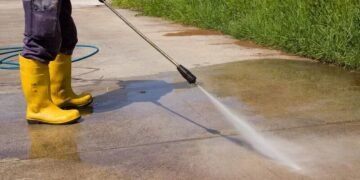The main purpose of a camera sewer inspection is to provide an accurate film image of the premises in order to determine the health of their lines. One good way to determine where these existing problems are is by hiring a camera that gives you the ability to see underground. You can learn more about your particular drainage problem and prevent it from happening at all!
What Does a Camera Sewer Inspection Service Do?
If you’ve ever been on the receiving end of a surprise backup, you know that when your sewage treatment plant goes offline, your daily life grinds to a halt. But before you can start frantically calling services to get your life back, you need to know what’s going on. And sewer camera inspection services can help you diagnose and fix problems before they become big issues. Here’s what you need to know about their services:
1. How do they work? A sewer camera inspection service will send a camera down into a sewage line to take images of the condition of the pipes. They’ll also use sensors to measure things like water temperature, pH levels, and nitrogen levels. By understanding the conditions down in the pipes, they can help identify potential problems before they turn into full-blown epidemics.
2. What kind of problems can they find? A sewer camera inspection service can find all sorts of problems down in the pipes – from leaks and blockages to corrosion and broken connections. If there are any issues that need to be fixed right away, they can do it using cameras or small equipment like robots. While it may be inconvenient for everyone during an outage, knowing what exactly is causing the problem can help workers get it fixed before the power goes out.
3. How do they determine what’s wrong? If they’re not catching certain problems while they’re down there, sewer camera inspection services can send in larger equipment to locate potential issues with pipelines, water treatment facilities, and other parts of the system. Cameras mounted right on the end of an arm are also very useful at spotting potential problems by capturing more detail than a standard camera (like cracks in steel pipe). Inside pipes, these cameras gather a great deal more information than normal cameras because they have infrared capabilities built in, giving them a look inside that most regular cams don’t have. Moreover, it’s important for technicians to use their cameras to capture any rust.
Also Read: 5 Signs You Might Need A Professional Roof Inspection
Sewer Camera Line Inspection Explained
If you are in the business of inspecting sewer camera lines, then you know that camera inspection is an important part of your overall safety and maintenance program. In this blog, we will explain what needs to be done in order to successfully inspect sewer camera lines using a sewer camera system.

Here are some tips to ensure a successful sewer camera line inspection:
1) Choose the right camera system – There are a few important things to consider when choosing a sewer camera line inspection system. Make sure the system has enough illumination, resolution, and range so that it can capture images of all areas of the pipeline. Additionally, make sure that the camera can withstand stress and water exposure.
2) Plan your inspection – Before you start your inspection, make sure to plan out where you will be located and what you need to look for during your inspection. This will help reduce confusion and improve flow throughout the pipeline.
3) Keep a record of your findings – Once you have completed your inspection, make sure to keep a record of what you found and when it was found. This will help ensure continuity in your safety and maintenance program.
What You Need To Know About The Process
A sewer camera inspection is not just for large, commercial-scale systems. Homeowners can also benefit from inspecting their sewer and septic lines. In fact, many homeowners are unaware of the potential problems with their sewer and septic systems until something goes wrong. By following these simple steps and using a sewer camera inspection service, you can identify any issues before they become major problems.
What you need to know about sewer inspection:
There are a few things that you should consider when planning your sewer inspection.
Size: Your sewer system will likely be larger or smaller than those of larger commercial businesses. This means that there may be additional areas that need to be inspected, such as manholes and culverts.
Age: Older sewers may have been built with less concern for the environment, which could lead to more serious problems down the line. Newer sewers, on the other hand, are typically more environmentally-friendly.
Condition: A poorly maintained sewer system can be a breeding ground for bacteria and other pests, which will cause damage to your home in the long run. Sewer cameras are an ideal tool for inspecting your sewer system. Here is a chart to determine the sewer camera system best suited for your needs.
Cost: Your budget is something that we take into consideration when siding with a larger, more expensive system. Remember, though, not all sewer cameras are created equal!
Camera Features: We often want automatic updates on each of our cameras’ live feeds so that we may always have a grasp on what is going on in our sewage treatment system. This means that several features of these systems are directly representative of their price, which makes sense since each one will provide you with exactly the same thing—the ability to make “Live Video Feeds On Your Way To Addis Refrigeration & Cooling Great news —we just reduced our List Price by 6%, bringing it down
Benefits of Thorough Inspections
There are many benefits to sewer camera inspections, including confirming that your wastewater system is operational and maintaining safe water quality. Here are some of the key benefits:
• Maintaining Safe Water Quality – Camera inspections can help confirm that your wastewater system is operating properly and preventing contamination of ground or surface water.
• Confirming That Your Wastewater System Is Operational – Camera inspections can help identify any issues with your wastewater system, such as broken pipes or clogged filters. By promptly resolving these issues, you can maintain safe water quality for both people and plants.
• Increasing Efficiency – Properly maintained wastewater systems can save you money by reducing the need for replacement parts and repair work.
Marketing Your Services
Are you thinking of marketing your sewer camera service? If so, you’ll want to read this blog post. In it, we’ll discuss what you need to know about sewer camera line inspection, and how you can market your service effectively.
First, let’s take a look at the types of sewer cameras that are available. There are two main types: underground and over-the-ground. Underground cameras typically use compressed air to capture images of the sewers underground. Over-the-ground cameras use surveillance tapes or digital photos to capture images of the sewers.
Both methods have their pros and cons. Underground cameras are typically less expensive to operate and maintain than over-the-ground cameras. However, they may not be as sensitive when it comes to detecting small objects or problems in the sewers. Over-the-ground cameras can be more sensitive, but they can also be more expensive to set up and maintain.
When choosing a sewer camera system, it’s important to consider your business’s specific needs. For example, if you’re concerned about vandalism or theft, an over-the-ground system might be a better choice than an underground system.














